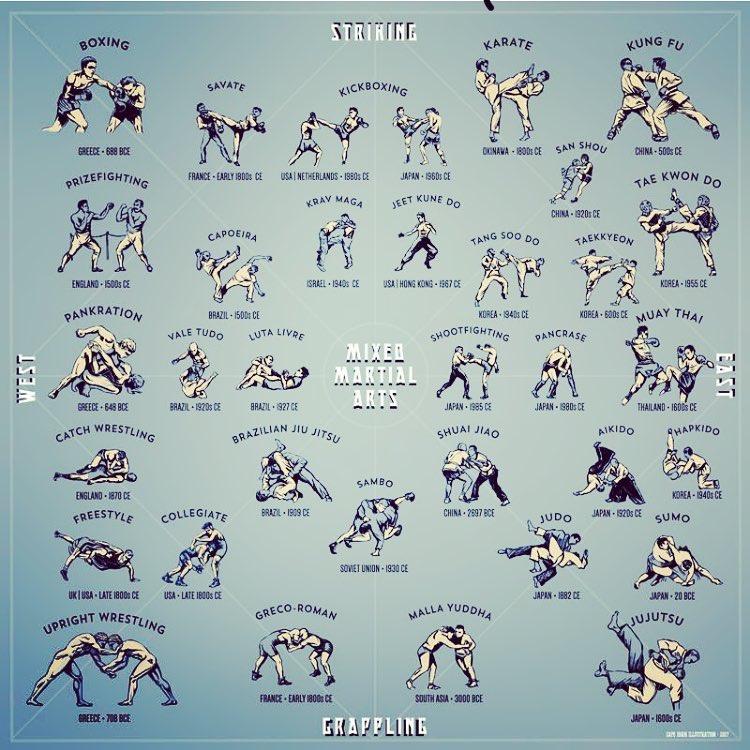Come Discover The Exciting Globe Of Martial Arts, Where Old Practices Meet Modern-Day Performance - A Trip Into History And Ideology Waits For.
Come Discover The Exciting Globe Of Martial Arts, Where Old Practices Meet Modern-Day Performance - A Trip Into History And Ideology Waits For.
Blog Article
Created By-McGrath Stokes
Step into the old world where martial arts were born out of necessity in varied regions. Societies crafted special fighting designs intertwined with historical contexts. Techniques progressed over centuries with dedicated technique and cultural exchanges. Today, modern martial arts blend standard components for maximum performance. Philosophically, martial arts highlight discipline, self-improvement, and harmony. Regard, humbleness, and equilibrium are foundational concepts assisting specialists towards development and resilience. Explore the midsts of this rich history and ideology to reveal the extensive impacts forming this enduring self-control.
Origins of Martial Arts
Fighting style originated in various areas around the globe, progressing as functional fight systems to resist threats. These old battling styles were developed out of necessity, with each society crafting techniques fit to their one-of-a-kind environments and difficulties. From the grappling arts of Jujutsu in Japan to the striking techniques of Martial art in China, martial arts were deeply intertwined with the historical, social, and social textile of their corresponding cultures.
In Japan, the samurai course refined martial arts like Kenjutsu, the art of the sword, which later progressed into the a lot more popularized form of Kendo. Meanwhile, in Brazil, Capoeira became a blend of dance and fight, produced by enslaved Africans as a way to stand up to oppression. Each fighting style brings with it an abundant background and philosophy, showing the worths and beliefs of the people who exercised them.
As you look into the beginnings of martial arts, you discover a tapestry of human resourcefulness, strength, and the unyielding spirit of warriors throughout time.
Development of Methods
Via centuries of method and improvement, battle strategies within numerous martial arts have undertaken a profound evolution. From ancient styles like Martial art and Karate to a lot more contemporary disciplines such as Brazilian Jiu-Jitsu and Krav Maga, the advancement of methods has actually been driven by a mix of social influences, useful applications, and technological innovations.
One substantial facet of this advancement is the cross-pollination of techniques in between different martial arts. For example, methods from typical Japanese Jiu-Jitsu were incorporated right into the development of Judo by Jigoro Kano in the late 19th century. This blending of styles has resulted in the development of hybrid martial arts like Mixed Martial Arts (MIXED MARTIAL ARTS), which incorporate components of striking, grappling, and submission methods.
In addition, the advancement of methods has been shaped by the raising focus on effectiveness and performance in fight. martial arts like judo 6 letters have actually continually sought to improve their techniques via strenuous training, testing, and competition, causing the development of highly specialized and effective combating designs. Generally, martial arts without sparring of methods in martial arts mirrors the dynamic nature of combat and the continuous quest for improvement and advancement.
Philosophical Structures
Discovering the underlying philosophical concepts of martial arts gives insight right into their core worths and guiding beliefs. At the heart of several martial arts techniques is the principle of discipline itself. By training your body and mind to act as one cohesive unit, you grow technique that prolongs past the dojo or gym into day-to-day life. This discipline encompasses respect, humility, and self-control, forming not simply your physical capacities but likewise your character.
One more essential philosophical foundation in martial arts is the idea of continuous self-improvement. The trip of grasping a martial art is nonstop, with specialists frequently aiming to far better themselves, both physically and emotionally. This focus on development fosters strength, determination, and a development mindset that can be applied to all elements of life.
Moreover, martial arts emphasize the significance of consistency and balance. Methods are developed to make use of a challenger's energy versus them, highlighting the concept of generating and rerouting pressure instead of meeting it head-on. This ideology includes social connections, promoting peaceful resolutions and good understanding. By embracing these philosophical foundations, martial musicians not just boost their fight skills but also cultivate a way of living fixated personal growth, respect, and consistency.
Final thought
Finally, the history and approach of martial arts use an abundant tapestry of tradition, discipline, and self-improvement.
Consider example the story of Bruce Lee, that transformed martial arts by mixing various designs and approaches to create his own one-of-a-kind type of Jeet Kune Do.
With dedication and advancement, martial artists continue to push limits and motivate others to reach their full potential both in combat and in life.
